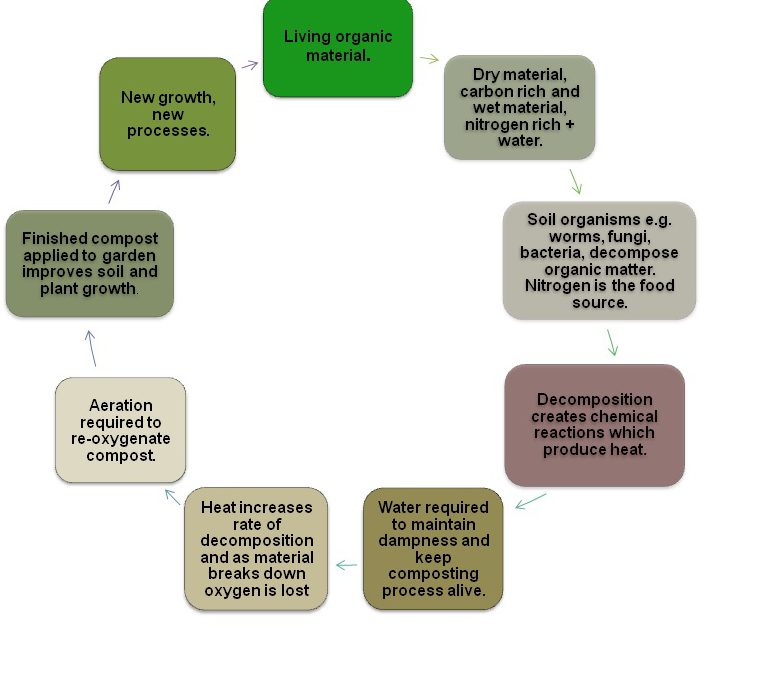So many of us are scared of the theory behind making our own compost and whether we can pull it off or whether we end up with a smelly, vermin attracting mess. We shouldn’t be. Composting is a recycling of organic matter into a nutrient rich humus that is very beneficial for our soils, many of which are poor. Here in the subtropics where we hardly experience a period of plants shutting down for the winter there is a nearly constant demand for nutrition from the soil so it is even more important that we keep on putting vegetable matter back in. Furthermore, our sometimes very heavy rainfall can cause soil to leach adding to the loss of nutrients.
Composting is mimicking a natural process that occurs as organic materials break down into the earth thanks to hard working soil organisms. When we make compost we are harnessing this natural process and speeding it up. Improving our soils is the best thing we can do for our garden. Healthy soils encourage healthy plants.
There are different ways we can produce compost. The quickest is through hot, or aerobic, composting. In this process heat, air and water are necessary ingredients to make a favourable environment to break down the organic matter into a humus rich compost. The organic matter used needs to be in the right ratio of nitrogen rich (wet) materials and carbon rich (dry) materials. The need for oxygen requires compost piles to be turned which can be a big job without machinery, particularly given the fact that you need a sizeable heap to enable heat to amass. Alternatively, some home made inventions can work well, for example poly pipe with holes in it placed vertically into the heap. For the home-gardener compost tumblers or aerobic compost bins makes this process much more manageable.
If you are new to compost making a search of the internet will give you some suggested recipes to help you get the right mix of materials depending upon what you have on hand. The addition of a handful of lime into the compost is often a good idea to keep the mix sweet, i.e. not acidic. But compost doesn’t have to be made to strict rules, remember this is a natural process.

Some people compost by simply piling up their garden waste, on the ground, or in trenches, and letting nature take its course. This will usually work, provided there is still a good nitrogen/carbon ration but the process of decomposition will take a whole lot longer. This is anaerobic or cold composting because there is no turning to let the air in and less heat is generated.
Nitrogen rich materials include: animal manures, grass clippings, green garden prunings and weeds, vegetable peel, coffee grounds, tea leaves, comfrey, yarrow, lucerne hay, blood and bone.
Carbon rich materials include: shredded paper, cardboard (broken up), straw/dry hay, sawdust, twigs and small pieces of wood and bark, egg shells, dry leaves.
Give it a go.
